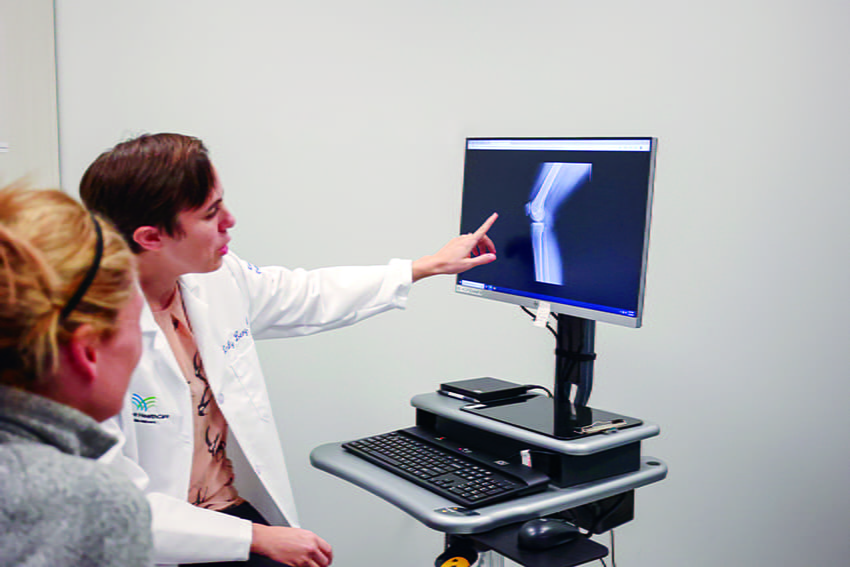Finding relief with the use of nonsurgical orthopaedic treatments

When it comes to orthopaedic conditions, finding a solution can be frustrating. Initial therapies may not work, and if first therapies fail to help, many people resolve to live in pain or seek more invasive care.
Thankfully, effective solutions are available without the need for surgery. Emily Levy, MD, a board-certified sports medicine physician with Main Line Health, is dedicated to providing patients nonsurgical relief.
"Although my title is in sports medicine, I treat musculoskeletal issues of all kinds and in people at every activity level," explains Dr. Levy. "Pain affects not only how we move but our ability to do the things we love. My goal is to provide the least invasive treatment options that achieve real results."
The first step: An accurate diagnosis
Dr. Levy's success in resolving musculoskeletal pain stems from her expertise in accurate diagnoses using physical examination, medical history and ultrasound imaging. Musculoskeletal problems — which involve the muscles, bones, joints and connective tissues — can vary from low back and hip pain to rotator cuff injuries, tennis elbow, Achilles pain, ganglion cysts and more.
"Many patients come to me after years of unsuccessful treatment without ever receiving a clear diagnosis," says Dr. Levy. "Pinpointing the problem is key."
Nonsurgical solutions
Once diagnosed, Dr. Levy involves patients in the decision-making process and develops a personalized treatment plan. Treatment options range from relative rest to targeted physical therapy or more procedural-based therapies like ultrasound-guided injections, aspirations and more. Recently, Dr. Levy began offering platelet-rich plasma (PRP) therapy — an innovative treatment that uses a concentration of the patient's own blood platelets to speed healing.
Many patients have trusted in Dr. Levy's orthopaedic expertise, including her fellow physicians. One Main Line Health doctor sought Dr. Levy's care after years of worsening hip pain. Although the physician had undergone multiple imaging tests, the problem was never diagnosed. And despite extensive physical therapy, she still suffered.
"The pain became so intense, I was unable to take a walk," says the physician. "As a former college athlete and active person, it dramatically impacted my quality of life."
Living life after recovery
Dr. Levy diagnosed her colleague with greater trochanter pain syndrome, a common condition in women ages 50 and older that occurs due to tendon injury and overuse. The problem stems from a build-up of disorganized scar tissue in the tendon that attaches to the lateral hip, causing tendon fibers to function abnormally. Dr. Levy recommended percutaneous needle tenotomy (PNT), a nonsurgical treatment performed in her office that works to break up scar tissue and restart the healing process.
"By pinpointing tendon abnormalities using an ultrasound, I can use a needle to disrupt the abnormal tendon and restimulate the body's own healing capabilities," explains Dr. Levy.
Today, Dr. Levy's colleague is back to walking miles a day. She works out at the gym on an elliptical machine. And she has regained her quality of life.
"With just one treatment, my pain was dramatically reduced. It's amazing," says the physician. "As a physician myself, the condition never occurred to me, and I had a difficult time finding answers. Dr. Levy is confident, down to earth and a true expert in care."
Next steps:
Make an appointment with Emily Levy, MD
Learn about sports medicine care at Main Line Health
These common injuries aren't always sports-related
Want to get the latest health and wellness articles delivered right to your inbox?
Subscribe to the Well Ahead Newsletter.
 Content you want, delivered to your inbox
Content you want, delivered to your inbox
Want to get the latest health and wellness articles delivered right to your inbox?
Subscribe to the Well Ahead Newsletter.
